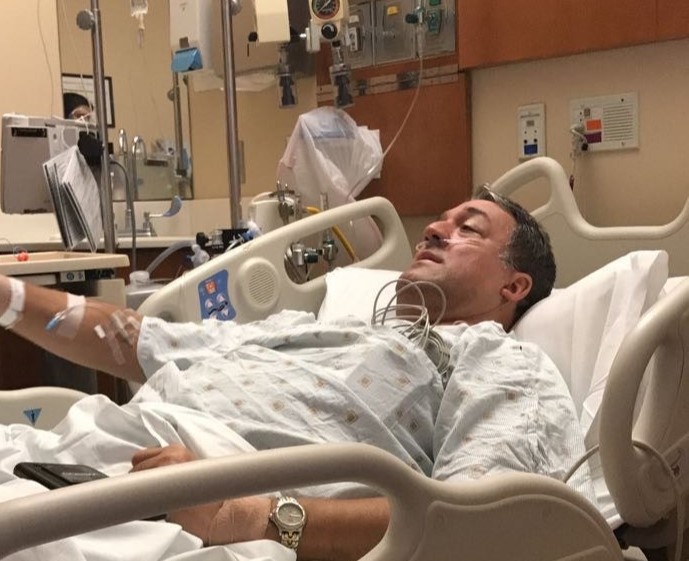In June 2017, I noticed a pain in my left calf. I had been walking several days a week, so I thought I may have pulled a muscle. I spent time trying to stretch it out over the next week, but it persistently got worse.
The pain I had been having in my calf then moved to my groin. The next morning, two weeks before my 50th birthday, I began experiencing breathing issues and an extremely rapid heart rate.
I called my wife and said, “I need to go to the hospital. I may be having a heart attack.” She called a close friend who is a doctor, who then called the ER. They were ready for us and began a scan of my left leg. Doctors were astounded that I had a clot going all the way from my groin to my ankle.
After many enoxaparin sodium injections, my heart rate still would not come down. I was going into atrial fibrillation, an irregular and often very rapid heart rhythm (arrhythmia) that can lead to blood clots in the heart.
I began to go into hemodynamic collapse, which causes insufficient blood flow in the body. They knew something more serious was happening and gave me a CT scan, where they found six clots in my lungs (pulmonary emboli, or PE), one being a massive saddle PE.
They performed a thrombolysis, which uses medication to break up blood clots and prevent new ones from forming. I was fortunate to have survived this and am extremely thankful for the doctors and nurses that cared for me.
Testing showed I have factor V Leiden and MTHFR (as does my son and daughter) which are believed to have contributed to my blood clots. I’m now on apixaban twice daily and will be for the remainder of my life. I am also much more aware of the need to stop, move, and stand when traveling.
I wish I had known the warning signs of a blood clot earlier. The NBCA does a great job of educating people about the signs and symptoms, and I try to share that information with as many people as possible.
Resources
Factor V Leiden Resources
Living Your Best Life on Blood Thinners
Signs and Symptoms of Blood Clots




